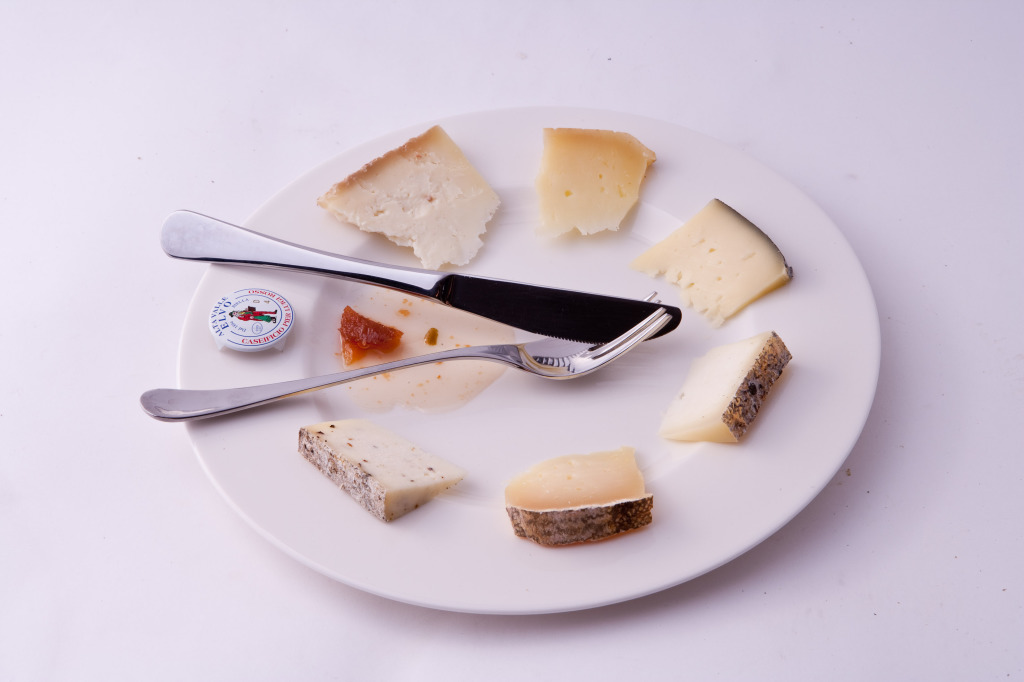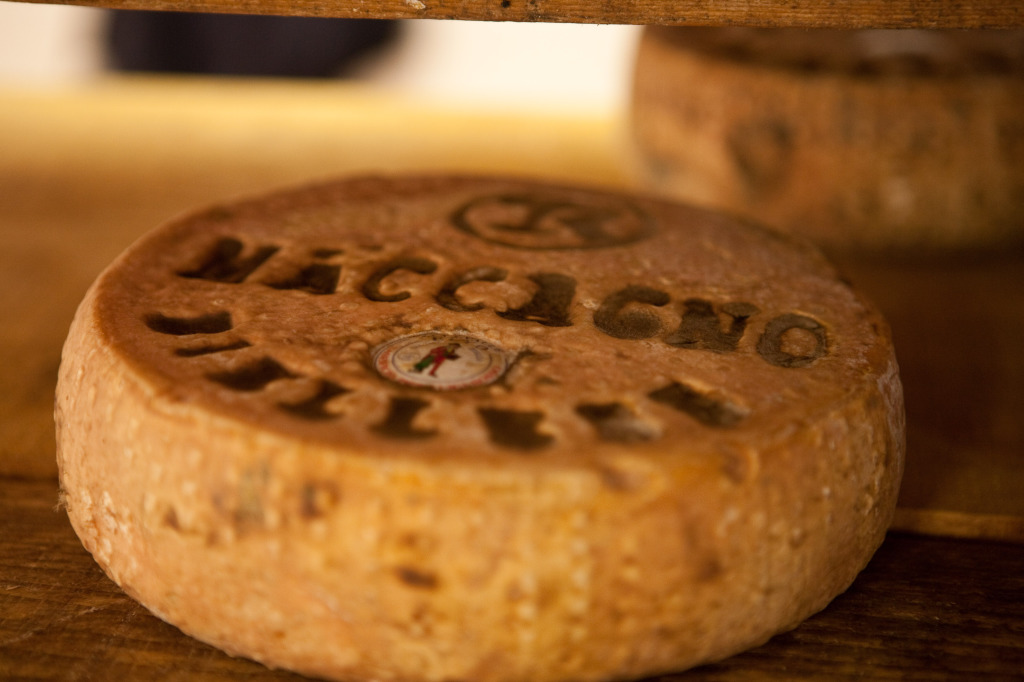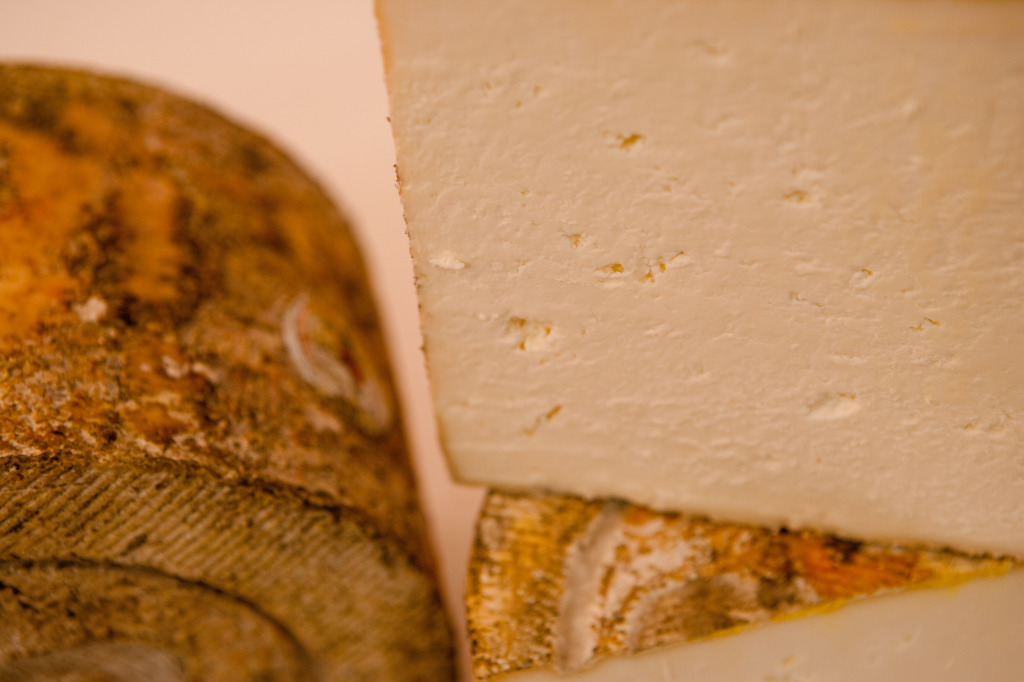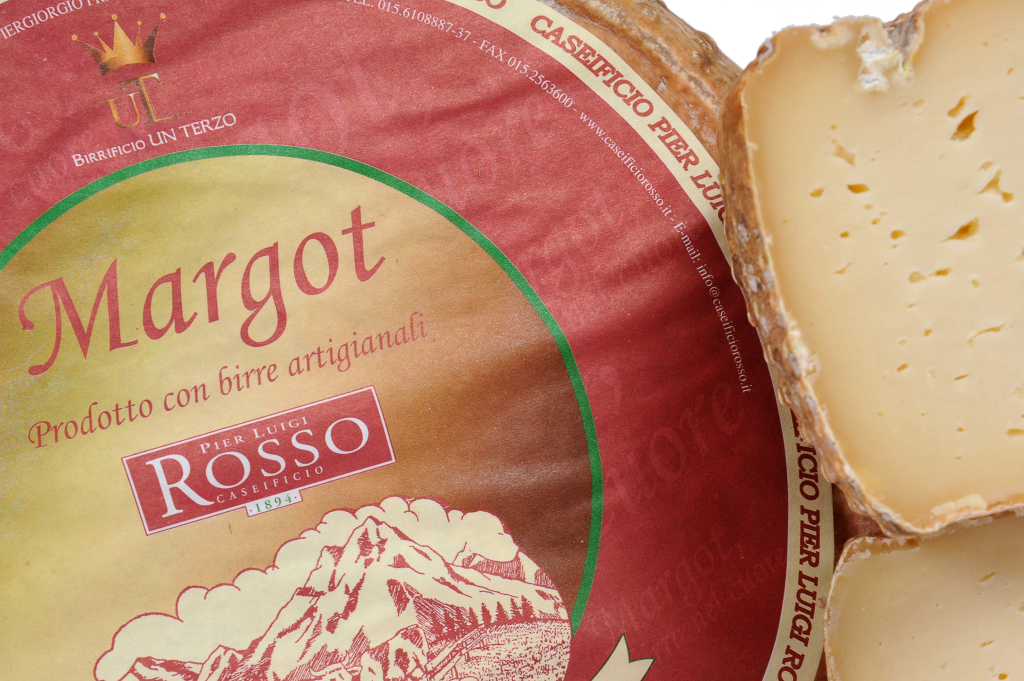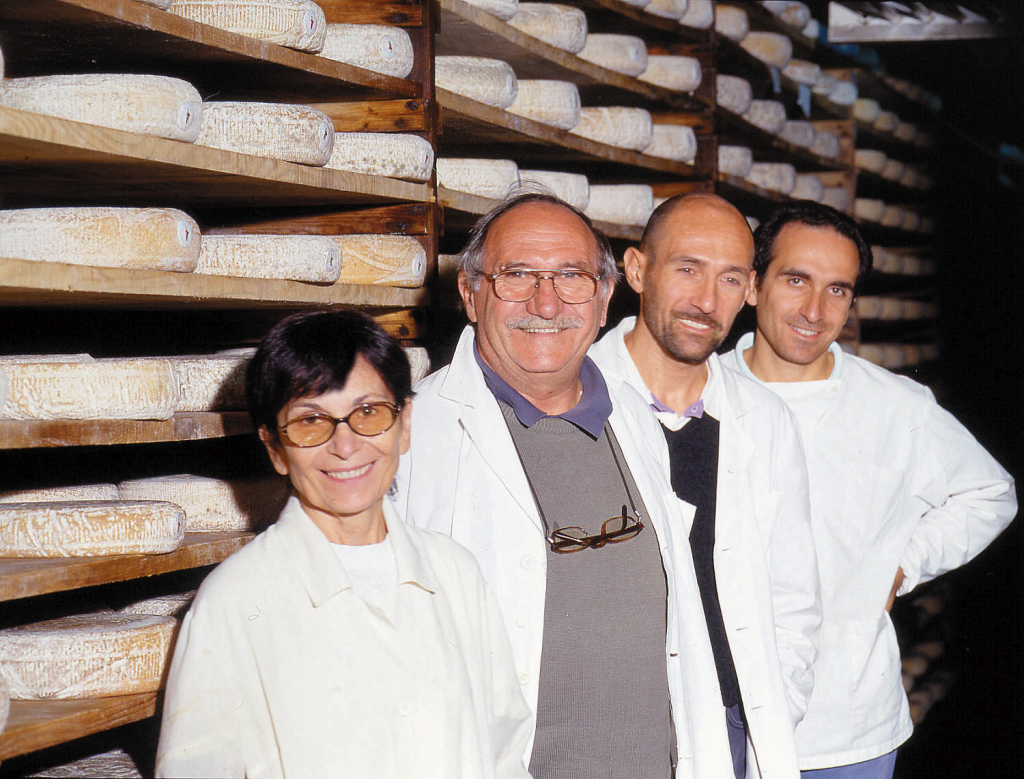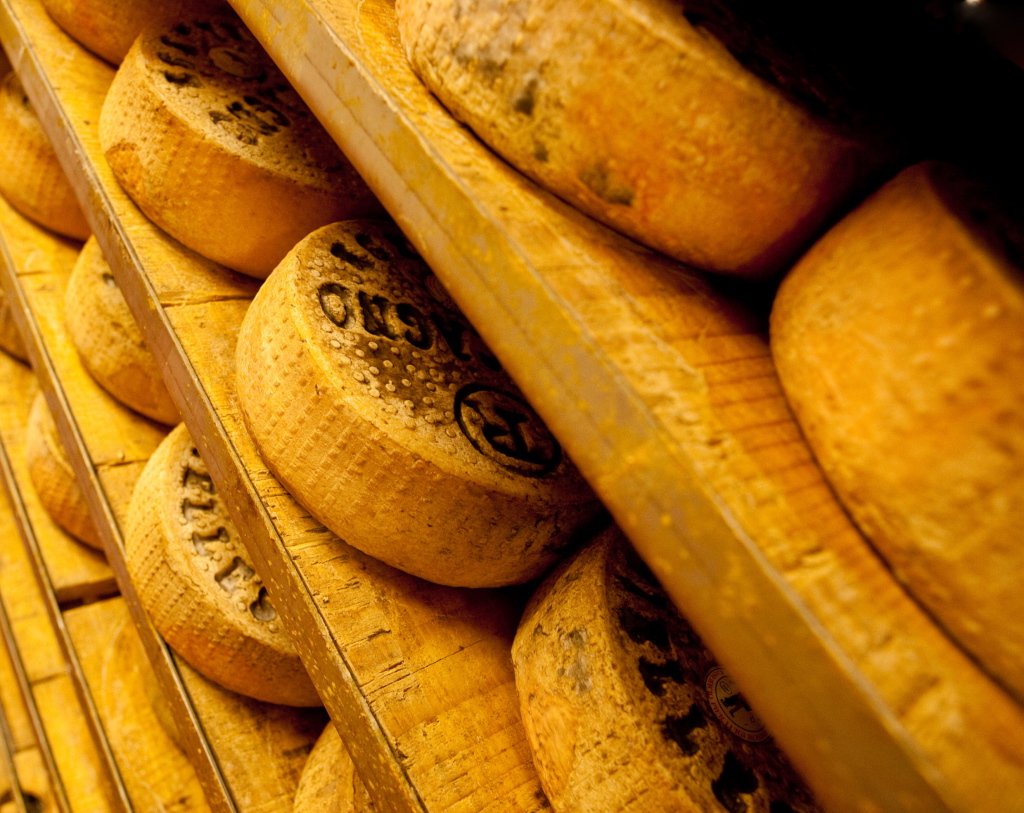 120 years of work, production, maturation, selection, and marketing of dairy products typical of the land of Biella. This is the summary of the history of the Dairy ‘Pier Luigi Rosso’ of Biella. The cheeses are mostly realized with the milk of an autochthonous cattle breed which risked extinction, the so called ‘Pezzata Rossa d’Oropa’. The activity of the dairy began in 1894 thanks to Rosa Pidello Rosso, and today it is carried on by her nephew Pier Luigi and his family. The dairy has chosen for 50 years as its symbol the ‘Gipin’, the carnival mask of Biella ‘par excellence’, in order to underline its relationship with its territory and traditions.
120 years of work, production, maturation, selection, and marketing of dairy products typical of the land of Biella. This is the summary of the history of the Dairy ‘Pier Luigi Rosso’ of Biella. The cheeses are mostly realized with the milk of an autochthonous cattle breed which risked extinction, the so called ‘Pezzata Rossa d’Oropa’. The activity of the dairy began in 1894 thanks to Rosa Pidello Rosso, and today it is carried on by her nephew Pier Luigi and his family. The dairy has chosen for 50 years as its symbol the ‘Gipin’, the carnival mask of Biella ‘par excellence’, in order to underline its relationship with its territory and traditions.
The company collects daily fresh milk from 37 farms located in the northern part of the territory of Biella. A thorough inspection on this milk is carried out, and the company devotes itself to a constant improvement of both quality and image of the local cheeses. Among them there are the ‘Maccagno’, the DOP ‘Toma Piemontese’, and the ‘Toma a latte scremato della Valle Elvo’ (Toma Cheese prepared with skimmed milk of the Elvo Valley). All these cheeses are produced according to the ancient processes of the country. This happens for the ‘Gratin’ (a sourish toma), and such more innovative products as ‘Margot’, a beer cheese, ‘Goliardo’, a cheese which boasts the DOCG ‘Barbera d'Asti’ wine among its ingredients, and ‘Montenero’, whose rind is treated with charcoal.
Maccagno, Toma Brusca, Margot
The Maccagno is an excellence cru of toma of the Biella mountain: it is a soft cheese realized with raw cow's milk. It is led to average maturation and aged in underground environments on stairs in white fir for about 60 days. It is characterized by a cylindrical shape, by an average weight of kg 2, and a rind crust of medium consistency, brown and, in some cases, with characteristic yellow moulds. Its dough has a soft structure, with subtle holes evenly distributed, and its colour is white, with yellow shades, while its flavour is pronounced and aromatic.
The Toma brusca is a semi-soft cheese. It requires a long ripening and it is prepared with pasteurized whole milk. It is left to rest in order to acidify it. The rind in the fresh product is smooth and clear, while it becomes dark, gray-green and wrinkled in the ripened cheese, on which yellow moulds can be found. Its paste results to be white, with a united and slightly grainy structure, and becomes more compact, soft, and fusible with the progress of ageing. Its flavour is fine, refined and complex, mildly spicy if it is very mature. For this reason, this cheese is ideal if melted in the milk in a bain-marie as a seasoning for rice, pasta, or as an ingredient for boiled vegetables or vegetable flans.
The third flagship product is the ‘Margot’, the ‘cheese with beer in its heart’. It is characterized by a soft paste and medium ageing, it is produced with pasteurized whole milk and artisan beer, mixed with milk before introducing the rennet. Its shape is cylindrical and has an average weight of kg 2. Margot is aged in underground environments on stairs in white fir for 30 - 90 days. Its paste is characterized by a tender structure and thin holes, evenly distributed, a pale white colour, and a sweet, pleasant, and delicate flavour, with hints of malt and beer.
Highly qualified cheeses
The production techniques of these three cheeses are ancient, and the technology which is used respects their tradition. Riccardo Rosso, owner of the dairy with his father Pier Luigi and brother Enrico, explains: «We want to convey sundry messages to our final customer. First of all, the craftsmanship of our working, respectful of tradition, with the help of new techniques and materials: the product must look to the past, but cannot be a prisoner of it, and has to cast its mind into the future, in order to meet consumers’ continuously changing needs. It must also be a healthy product and give something more in terms of organoleptic characteristics. Finally, it must be beautiful and distinctive. That is why we chose to use micro-pierced thermo-retractile film. Thanks to the way we work, today we can offer highly qualified cheeses, which differ completely from the similar ones, and we have been able to assert ourselves in England, Japan, Czech Republic, Poland, Belgium, France, USA, and Australia. We are growing on foreign markets, where we are already exporting 10% of our production: our cheeses should be explained thoroughly, and this requires a great marketing job, but, besides giving unique feelings, they tell a story about women and men on a particular territory and for this reason, too, they have virtually unlimited scope for development».